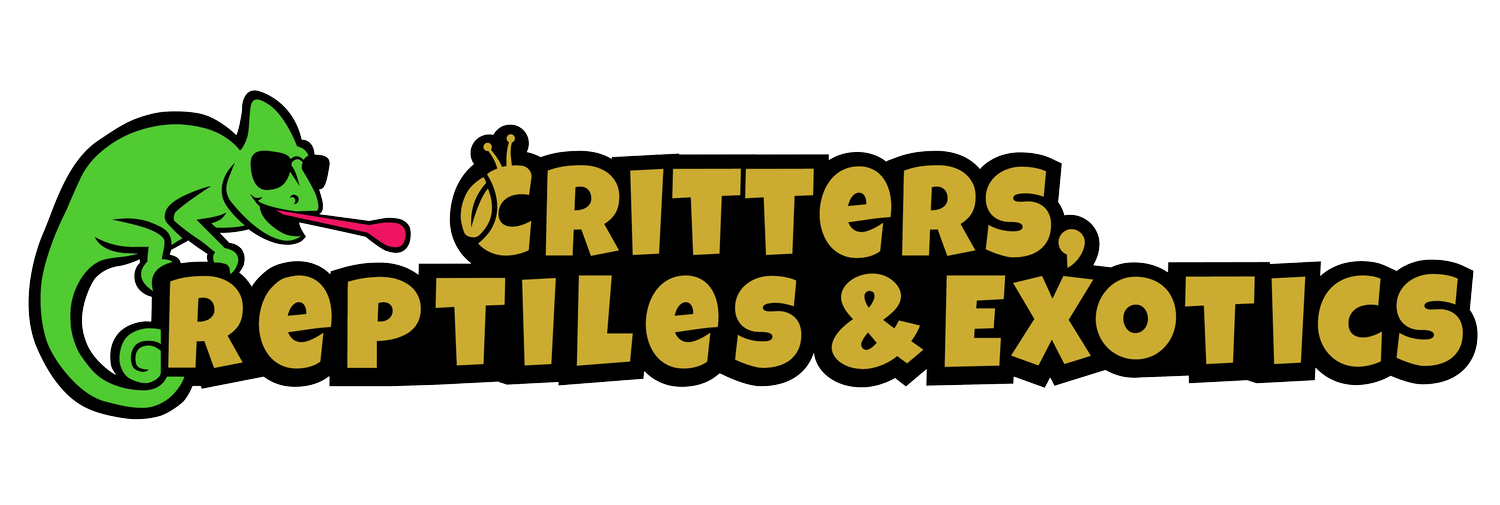Red-Eyed Tree Frog
Red-Eyed Tree Frog
(Agalychnis callidryas)
These iconic frogs are known for their vivid green bodies, vibrant red eyes, and blue-and-yellow striped sides. Native to Central American rainforests, red-eyed tree frogs are arboreal, nocturnal amphibians that thrive in high humidity environments with vertical climbing space and foliage.
Lifespan:
8–12 years in captivity with proper care.
Sexing:
Males are generally smaller with vocal sacs; females are larger and more robust.
Enclosure:
Minimum Size: 18” x 18” x 24” (vertical terrarium preferred)
House solo or in small groups (only 1 male per enclosure to avoid aggression).
Provide vertical climbing branches, cork bark, and broad-leafed plants (live or artificial)
Substrate:
Moisture-retaining substrate like coco fiber, sphagnum moss, or bioactive setups.
Spot clean daily; deep clean every 4–6 weeks.
Lighting & Temperature:
Day Temperature: 75–82°F
Night Temperature: 65–75°F
Basking Area: Low-wattage bulb can provide a gentle 85°F spot if needed
UVB Lighting: Optional but beneficial (low-level 5.0 UVB for a 12-hour day/night cycle)
Humidity:
Maintain 70–90% humidity
Mist 2–3 times per day or use an automatic misting system
Use a hygrometer to monitor humidity levels.
Food:
Insectivores—feed crickets, black soldier fly larvae, and occasional small roaches or waxworms.
Juveniles: daily
Adults: every other day
Gut-load insects and dust with supplements.
Water:
Provide a shallow water dish with dechlorinated or spring water
Replace water daily
Red-eyed tree frogs often absorb moisture through their skin—clean, moist environments are crucial.
Supplementation:
Calcium without D3: 2–3x per week
Calcium with D3: 1x per week
Multivitamin: 1x every 1–2 weeks
Red-eyed tree frogs flash their bright red eyes and bold colors to startle predators—a defense called startle coloration—before leaping away to safety!


